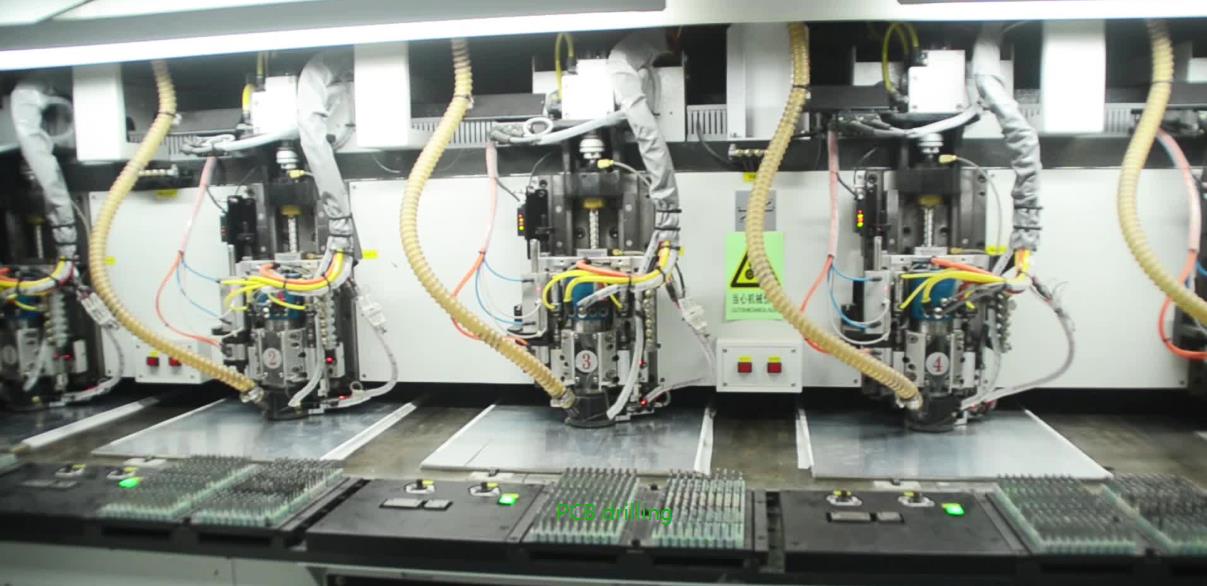With the acceleration of high-performance electronic equipment and equipment innovation, the development of the electronics industry has taken a step in global development. Electronic innovation is booming, whether it is automotive, military, aerospace, defense, marine, telecommunications, and many other fields. One of the basic and main products used in electronic equipment is high-density interconnect (HDI) to build printed circuit boards. These PCBs have conductivity between the strands on each layer, which is controlled by the inner layer vias. This is because drilling plays a vital role in PCB layout and manufacturing. This article is a guide to the basics of drilling on circuit boards. It highlights the current trends in drilling technology.
Introduction to drilling machine and drilling technology
Decades ago, PCB drilling was done with a simple drilling machine. The drilling operator must manually move the panel to adjust and correct the x and y coordinates and drag the lever to drill, which is time-consuming. With the advancement of technology, it has become a constant event in the electronics market, and new drilling techniques have been introduced. Now, PCB is enough to have more than 10,000 holes of different sizes. Let us learn more about PCB layout and drilling operations in PCB manufacturing.
drilling

When a hole is usually drilled on the bottom of the board to connect the board layers thermally and electrically, it is called drilling on a circuit board. These holes when connecting the circuit board layers are called vias. The main purpose of drilling operations in the PCB manufacturing process is to insert through-hole component leads or connect board layers to form a smooth circuit on the PCB. From the beginning, this became a key part of the project, including determining the PCB layout, the materials to be used, the method of manufacturing the PCB, and the type of vias required to connect the layers of the circuit board. Taking a wrong step may prove to be a costly affair, because a tear or damage on the trace may cause the display to fail, and eventually the materials and defects in the batch will be used more.
Drilling machine and drilling technology
Over the years, through technological innovation, the drilling process has become simple. Now PCB drilling can be done with small diameter drills, automatic drilling machines, CNC drilling machines or many other effective drilling machines, suitable for PCB manufacturing of many types of circuit boards.
The automatic drilling machine can drill holes in the circuit board by controlling the drilling operation with a computer. When multiple holes of different sizes and diameters need to be drilled, CNC machine tools are one of the effective solutions to save time and production costs.
In the case of drilling a registered hole, make sure to drill further on the drilled hole. The center of the inner pad will be precise, using an X-ray drill. This technique is used when through holes connect the copper layers together and drill holes in the lead components.
If the diameter of the through hole is small, the use of a mechanical drill bit will increase the breakage on the circuit board and increase the cost. Therefore, researchers have proposed a laser drilling technology to obtain precise solutions for drilling micro-holes without breaking the circuit board. When very small holes are drilled into the board and connected to the board layer, they are called micro-vias. One of the currently widely used drilling techniques is CO2 laser drilling, which is used to drill and process inner through holes.
If you want to drill holes only for connecting some copper layers instead of passing through the entire circuit board, you can perform a separate depth drilling control or pre-drill the board before the PCB lamination or laser drilling mechanism.
It is recommended to use PCB drilling experts in the initial stage of the PCB project, and at the same time determine the PCB layout and production technology in PCB manufacturing.
How can precise drilling help reduce costs?
During the drilling operation phase, the cost of drilling at the optimal speed will be reduced. When drilling holes in the circuit board, every operation should go hand in hand. By drilling faster, the speed should also be controlled to ensure that tool breakage is not a problem. This can control the ratio of drill size to plate thickness. With this, the cost can be automatically controlled by controlling the time consumed by the PCB layout.
Therefore, while working hard to reduce costs, research and development are also moving towards smooth electrical conductivity between through holes to develop an effective component installation to ensure that each drill bit has been successfully registered and completed the tool path.